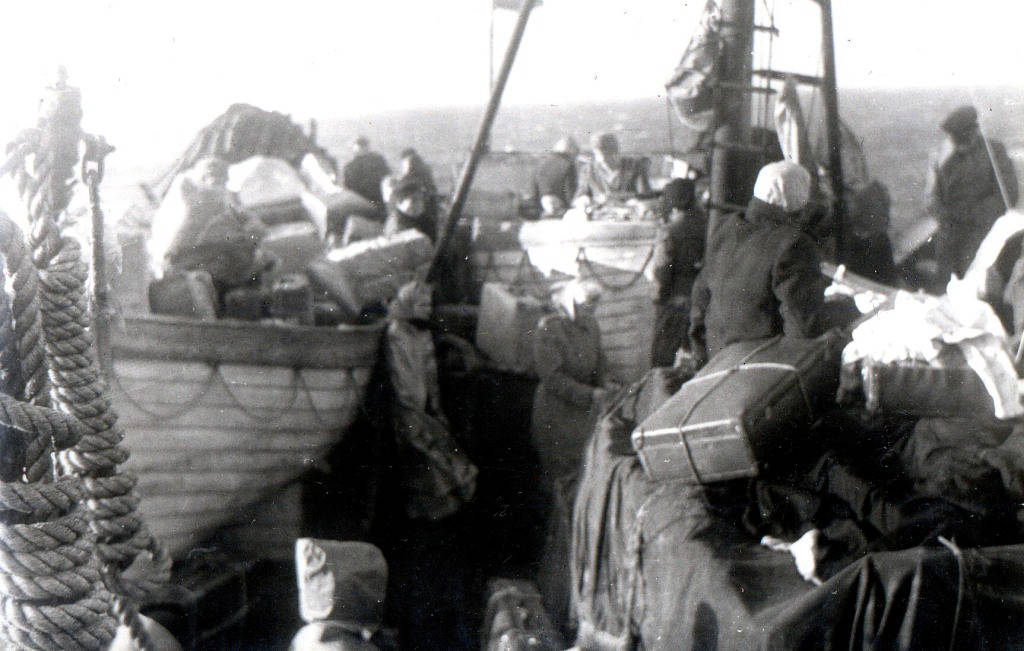
The Walnut Voyage Story
What prompted this dangerous journey to Canada 60 years ago?

What prompted this dangerous journey to Canada 60 years ago?
Purchase of Ship
It was Alexander Kalbus who began soliciting funds for the purchase of a boat with which to escape to Canada. It was nearly impossible to purchase a decent ship for the ocean voyage. He found, however, the S.S. Walnut. Built originally in England as a Royal Navy minesweeper in 1939, she was now up for sail by a Swedish company which had converted her into a cargo ship. She had an overall length of 164 feet and a width of 28 feet. With retrofitting, would she be able to carry a human cargo to freedom?
A co-operative was formed to get together the monies necessary for the purchase. Known as the Compania Maritima Walnut S.A., shares of the ship were sold as well as adult and child fares. The ship was found to be seaworthy and purchased for a price of 225,000 kr. - $63,000.
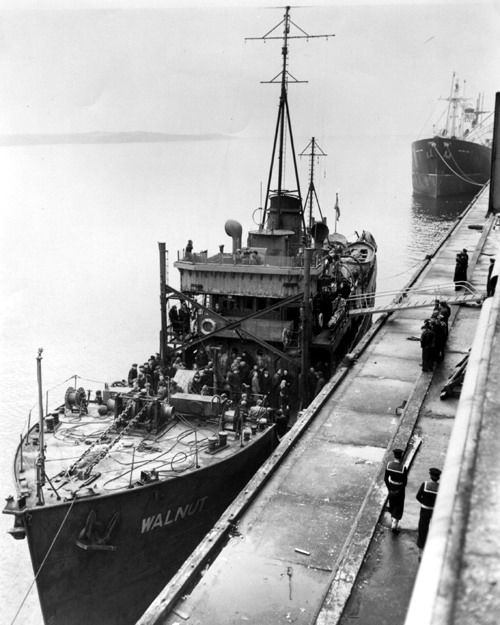
It took three months to refit the Walnut for her voyage to the new world. Originally designed for a crew of 18, the Walnut was being prepared to give passage to over 300 individuals. So crowded was she with her human cargo, that the interior resembled a honeycomb. Bunks were stacked 24 x 24" and in some cases three high with very little room to move. Koidula Roiser recalls that she and her husband slept with their backs to each other and their knees wedged against the walls to try to prevent rolling with the waves.
Note: Tom McCabe writes in his memoires that "all these corvette type ships had flat bottoms that made them subject to rolling. One minute it seemed from the starboard Oerlikon turret that I could have put my hand in the water, the next I was up sky-high and my opposite number was down near the water on the Port side." Read McCabe's memoires working aboard the HMS Walnut.
Every inch of space was utilized for accommodation in order that as many people as possible could make the voyage.
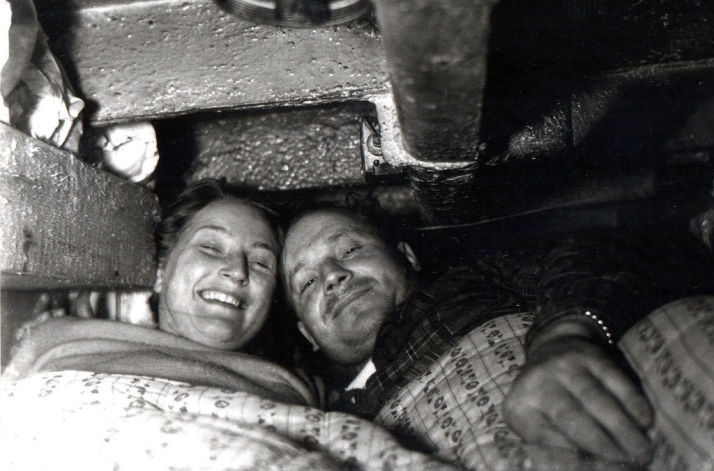
Secrecy was Imperative
Confidential letters were sent to passengers indicating what they were allowed to bring and where they were to meet. It was imperative that they drew little attention to their preparations.
Ultimately, there were 347 passengers who boarded the Walnut for their voyage to freedom. They ranged in age from nine months to 80 years and were composed of eight different ethnicities. All knew that they faced illegal entry into Canada.
To ensure secrecy, the ship was moved from Göteborg to Lysekil. Even here, her departure was in jeopardy. There weren’t enough life preservers. Sixty passengers were told to get off the ship. Customs officers and police asked all to get off and re-board using a shorter passenger list. During re-boarding, an urgent telegram arrived for port officials from the Russian authorities – the boarding was to stop immediately! The Swedish port officials suspected what the telegram said and decided to open it AFTER the Walnut had sailed.
Missing People?
What happened to the missing 60 people? Some newspapers wrote articles saying that they suspected they had gone to international waters and met up with the ship there. This supposition was incorrect. But no, they were not left behind - they had been hidden - sealed in a room in the bottom of the ship. The Swedish port authorities had decided to turn a blind eye to the room behind the pile of suitcases – the room they knew was there – but purposely decided NOT to investigate. In a 1966 article in the Toronto Estonian community newspaper Meie Elu, a Walnut passenger thanks the port authorities. He explains that both the police and the port authorities knew of our intent to hide the extra people. They did not trust each other and both separately gave us a warning concerning the other. Both knew we had stowed away the extra people and turned a blind eye. "I sincerely thank, herein, the friendly Swedish authorities."
The Voyage Begins
On November 17th, 1948, the vessel traveled from Sweden, through the North Sea, to the West of Ireland before the oceanic journey began. “We sailed north of Scotland through the North Sea to avoid the Russians, whom we suspected were attempting to re-capture us, stated the skipper of the Walnut." The voyage was met immediately with strong winter storms. What have been described by passengers as monstrous, ocean waves crashed over the decks and washed away the reserve coal. The next morning, only a few passengers partook of the breakfast coffee - all the rest were too seasick to leave their bunks. Koidula Roiser and Nelly Lind both state that they were completely bedridden during the entire voyage.
Nelly had two young sons aboard who were running around the decks in and out of the coal storages - she was unable to look after them - she was so sick.
Trouble with the ship’s pumps resulted in three feet of water laying in the hold. One more foot of cold ocean water hitting hot boilers would have spelled disaster for all on board. With high waves crashing around them, men held on for their lives and bailed. Someone came up with the idea of using fat from the kitchen to seal the deck openings thus sealing holes and keeping out the water.
Below: The captain and crew at work in the engine room.
The route of the voyage took them North of Scotland through the Orkney canal. They turned toward Northern Ireland and put in to the port of Sligo to pick up more coal. The ship remained here for four days. This was the end of their voyage with the Walnut for four passengers who disembarked at Sligo. A marine engineer and his wife left the ship and berthed on a British ship to sail to Australia because they had Australian visas. One Finnish woman, married to an Estonian, became gravely ill with appendicitis and was taken by the Red Cross to hospital for surgery. The Red Cross promised to send the patient to Canada upon her recovery. The Captain himself put a German passenger off the ship because he didn’t trust him.
The arrival of the Walnut caused quite a sensation for the residents of the small Irish town.
All passengers remember their hosts as being very hospitable and friendly. The refugees were invited into homes for meals and baths. Food was brought on board for the passengers and treats given to the children. Doctor Murphy of the Red Cross provided medical supplies. Being sympathetic to their plight, the local police allowed all passengers to disembark without checking passports.
Prior to resuming the voyage, three local priests conducted religious services at the pier. They blessed the ship and spiritually prepared the passengers for the difficult and dangerous voyage they were about to undertake. They promised to pray for each soul during the next few days so that they might have a safe journey.
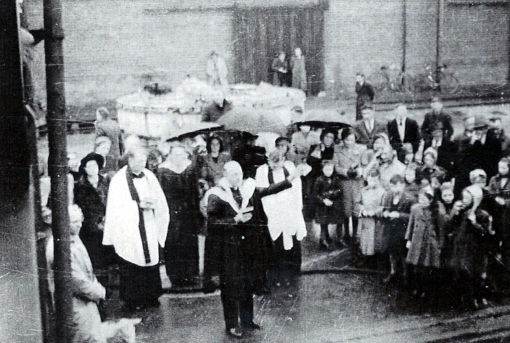
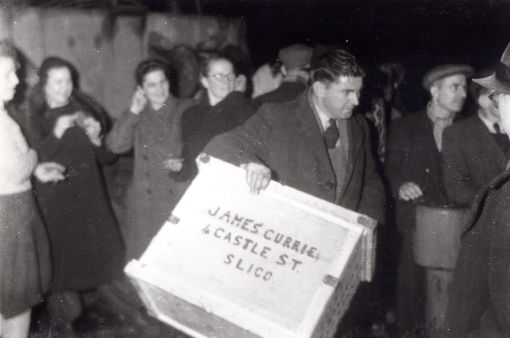
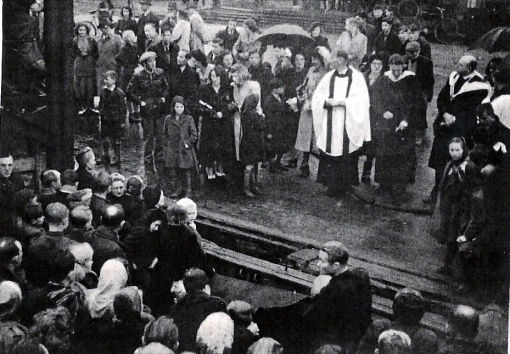
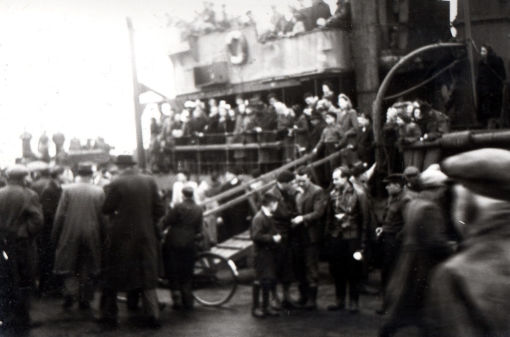
Crossing the Atlantic
And so, the dangerous Atlantic crossing began. There were sunny days, but many more stormy ones. Many perils awaited the Walnut on her long voyage. Stormy winter ocean waves washed over the deck of the tiny ship forcing passengers to cling to the railings or be washed overboard. With the number on board, the number of children, how no one was lost to the sea - is a wonder. Only two other ships were spotted during the voyage. The radio mast had broken during the storms and the Walnut was only able to receive radio signals, but not able to respond to them. At one point, the Royal Canadian Air Force signaled that they were off course and needed to turn south.
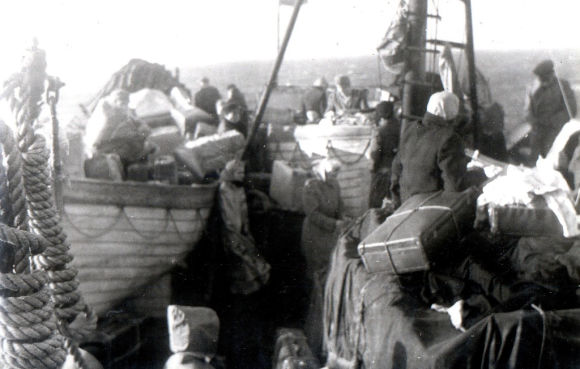
Finally, after what seemed an eternity – seasick, suffering and hungry, the passengers spotted a strip of land off in the distance. It was the land they longed for and dreamed of – they saw Canada. The Walnut first arrived in Sydney, Nova Scotia. Immigration officials came on board, but decided to have the shipload of passengers disembark at Halifax because the facilities there were better.
The first passengers to step ashore on December 13th, were the Captain August Linde, his wife Hilda, and their two small daughters Heili, aged 11, and Luule, aged 7. All in all, including their stop in Ireland, the voyage had lasted a month. One passenger recalls how sweet the Canadian bread tasted after eating the molding bread that they'd had on board.
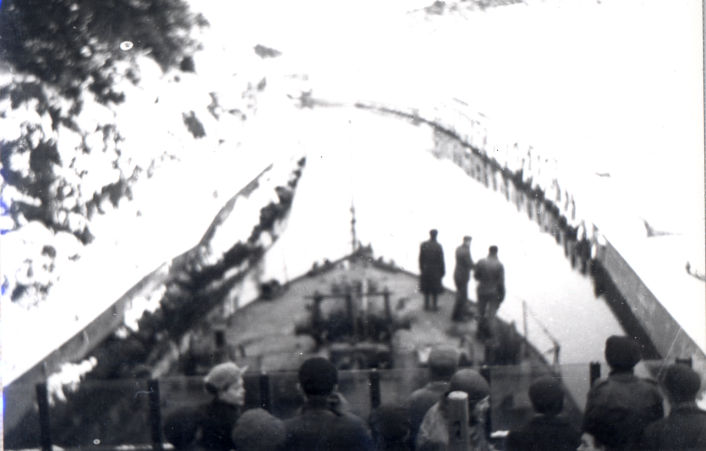
Gateway to Canada
The refugees found themselves at Pier 21 - known as the "Gateway to Canada". Over a million immigrants and Canadian military personnel have passed through these doors.
Immigration authorities at Pier 21 placed the passengers in Immigration Detention Quarters and at Rockhead Hospital – all were carefully screened and interviewed. Some reports indicate that only the Captain and his family had visas to Canada, other reports indicate that there were visas for 15. It was estimated that it would take six weeks time to screen all candidates for citizenship. Ultimately, of all the passengers, only two were refused entry - one tailor and one shoemaker.
The Walnut voyage changed the views of immigration officials. As a result of the Walnut's voyage and arrival, a special immigration officer was sent to Sweden and the doors for legal immigration were opened.
The voyage had been dangerous and uncomfortable – but no one had expected comfort. All they wanted was to get across the sea – to safety. This brave group of immigrants would have put up with anything to get to a free homeland. One immigration officer told a Walnut passenger, “You came to a good country – there is room for you here.” How the Walnut carried its human cargo – so much greater than it had ever been designed to accommodate - is still a wonder. The only answer – God had a plan and was looking out for these people.
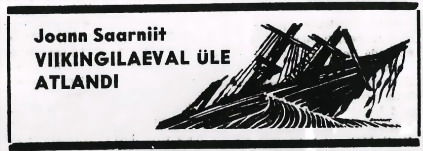
"It has now been 30 years since 347 Estonian refugees arrived in Canada aboard the old steamship 'Walnut' in the fall of 1948. The majority has forgotten this voyage, however, those who participated will recall it vividly for the rest of their lives....."
Read more about the voyage from a translated newspaper article written by Joann Saarniit from the Estonian Toronto community newspaper "Vaba Eestlane" dated fall of 1978.